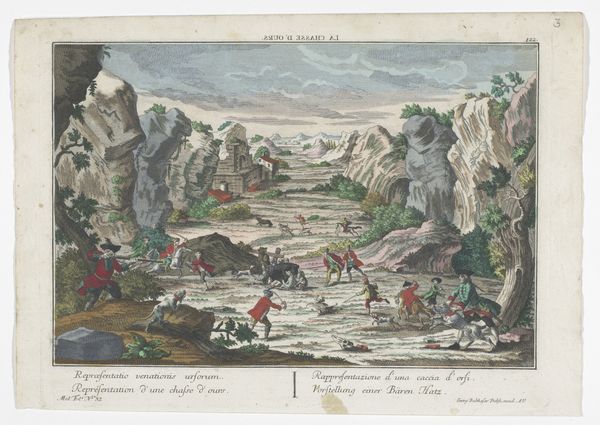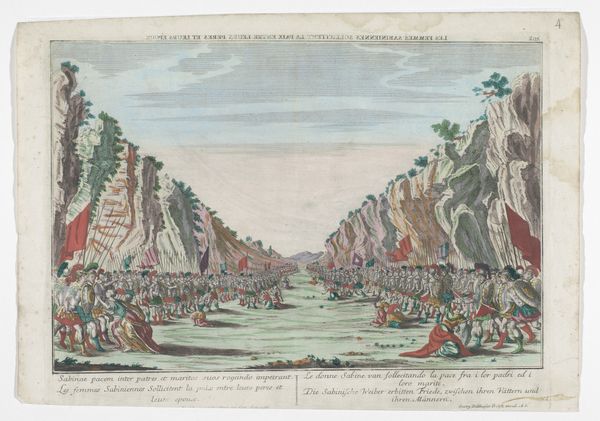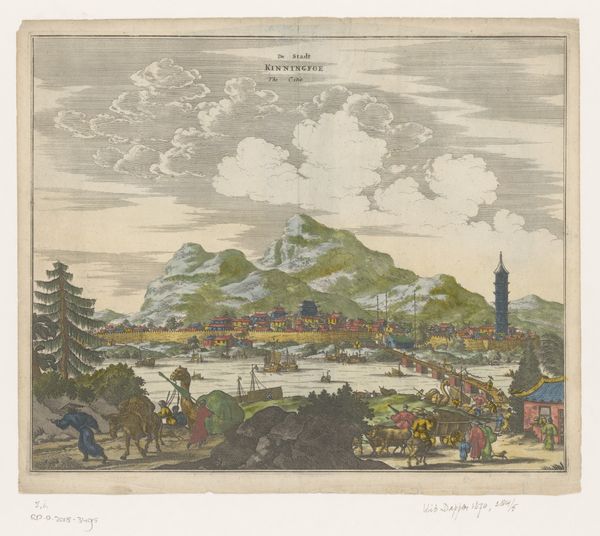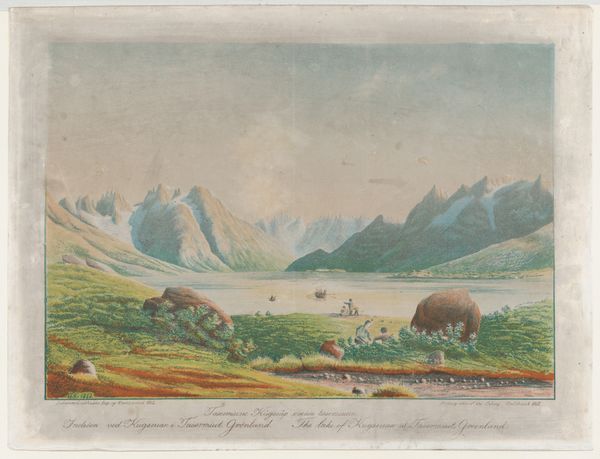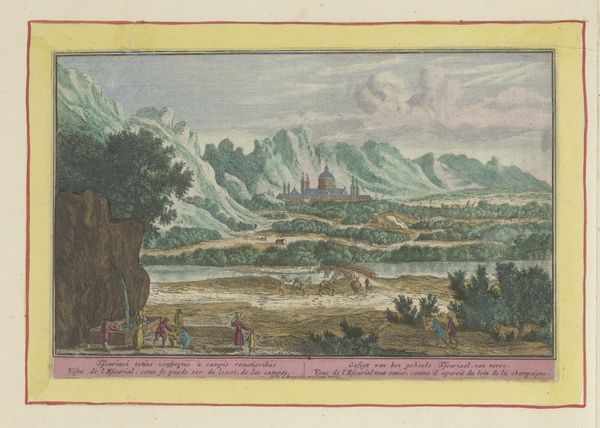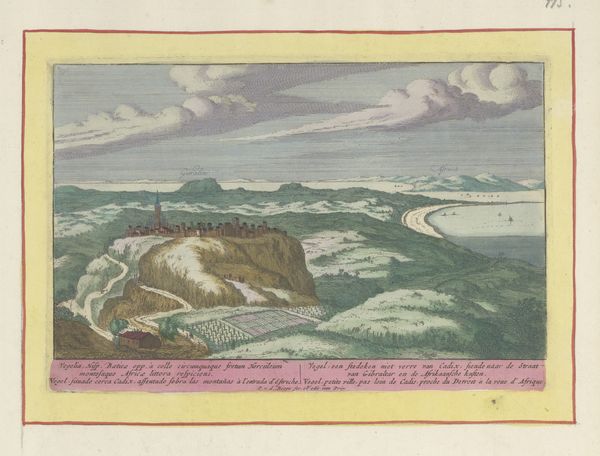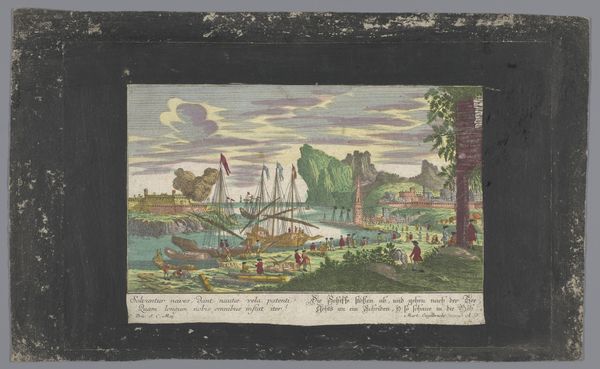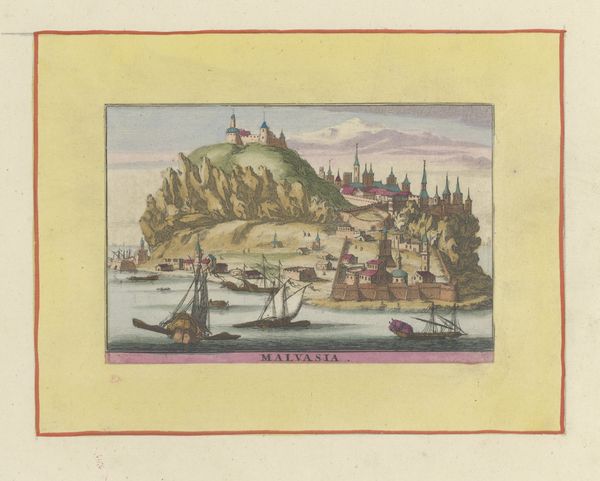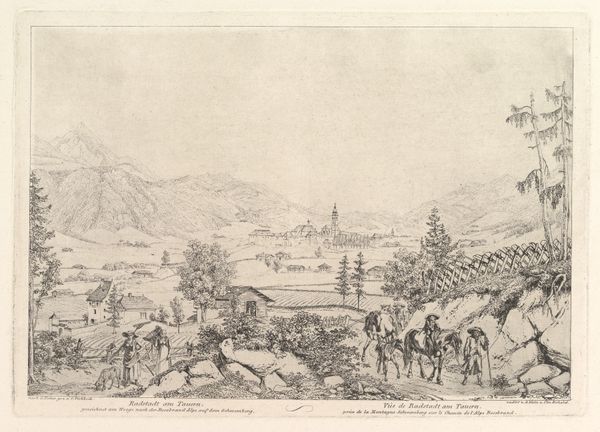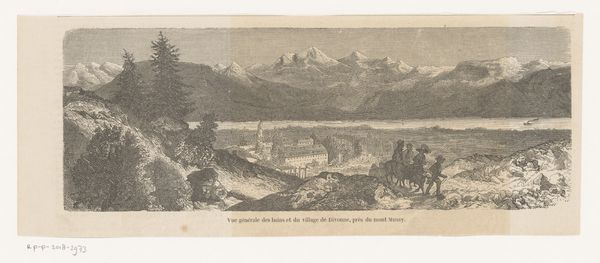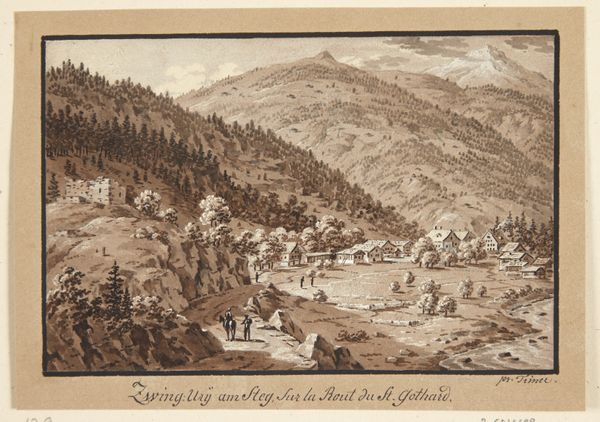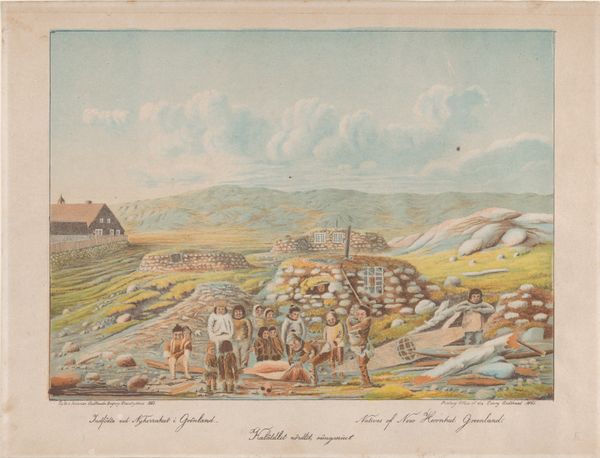
Dimensions: height 316 mm, width 434 mm
Copyright: Rijks Museum: Open Domain
Georg Balthasar Probst created this print depicting Romulus and Remus in the 18th century. This historical scene reflects the enduring fascination with the founding myth of Rome, but it is also important to consider the social conditions that shaped its production and reception. The image presents a carefully constructed vision of ancient history. Through its visual codes, it evokes a sense of classical authority, linking 18th-century Europe with the grandeur of the Roman Empire. The clothing and armaments signal a sense of power and order. Yet, this image also operates within the specific cultural context of the late 1700s and the rise of encyclopedic thinking, as printmaking became increasingly central to the circulation of knowledge. The engraver would have studied earlier representations of Romulus and Remus, thus placing himself within a tradition while also staking his own claim. Examining institutional archives of printmaking workshops, distribution networks, and patterns of consumption allow us to better understand its historical significance.
Comments
No comments
Be the first to comment and join the conversation on the ultimate creative platform.
